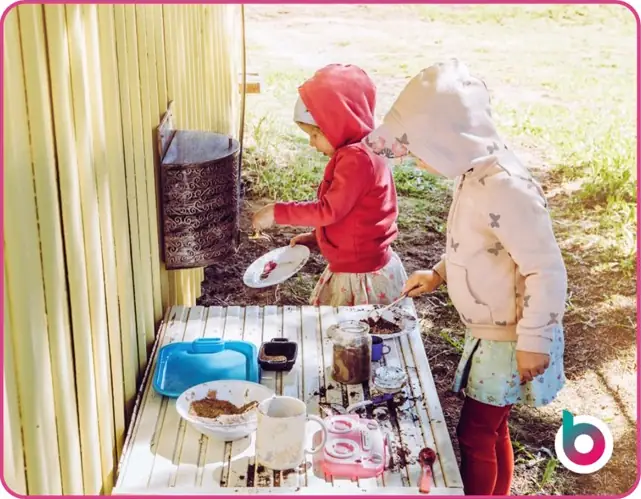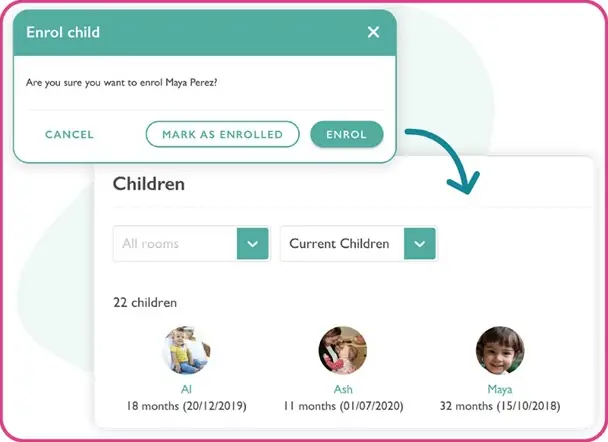Choosing the right nursery is a huge decision for any parent – and in 2025, parents are doing their research, asking more questions, and seeking out settings that not only look great but also feel right. With the introduction of school-based nurseries set to open in September 2025, the choice for parents is more varied than ever before.
In this blog, we’re diving into the top 12 things parents are really looking at when choosing a nursery this year. Whether you’re a nursery manager preparing for walkarounds, or you just want to better understand what families value most – this one’s for you.
If you’re ready to really wow those parents on your next walkaround? Don’t miss our free download at the end: The Nursery Manager’s Guide to Impressing Parents – packed with practical tips and visit FAQs.
12 decision-making factors parents consider in 2025
Labour’s plans for education and the early years will increase the number of nursery places through their school-based nursery initiative starting in September 2025.
With more nurseries now opening within primary schools, the decision-making landscape is shifting. Where location once topped the list of priorities, it’s no longer the deciding factor it used to be. Parents may become spoilt for choice – and that means they’re digging deeper.
They’re comparing settings not just on where they are but on how they operate, what they offer, and who they are as a team.
It’s these 12 key factors that can make the difference between a parent walking away from the nursery visit and enrolling.
- Online presence
- Communication type and amount
- Flexibility of places
- Funding types and extras
- Environment and provision
- Working and opening hours
- EYFS curriculum
- Inclusion and SEND support
- Sickness policy
- Ethos and values
- Readiness for school
- The ‘feel’ of the visit
1. Your nursery’s online presence
In 2025, a nursery’s online presence is often the first impression parents get – and we all know how much first impressions count. From scrolling through your nursery website to checking out your setting’s social media.
Parents are looking for a glimpse into daily life, your values, and the overall feel of your setting. A strong, up-to-date online presence helps families picture their child thriving in your care before they even step through the door.

2. Parent communication
Parents today want to feel connected to their child’s day, even when they’re not there – and that’s where communication really matters. It’s not just about a quick chat at pick-up anymore: families now expect regular updates through an online diary or app that keeps them in the loop.
The type and frequency of communication you offer can be a real deal-breaker for modern parents, who want to feel like valued partners in their child’s early learning journey.
3. Flexibility to book extra sessions
Flexibility is a big win for busy families, and parents hugely value the option to request extra nursery sessions when needed – especially when it can be done quickly and easily online. Whether it’s a last-minute meeting or a change in routine, being able to secure an extra session without the back-and-forth phone calls makes life so much easier.

With Blossom, nurseries can offer this peace of mind confidently, as the platform automatically calculates available spaces while keeping you safely within statutory ratios.
It’s a smart, stress-free solution that parents really appreciate – and that gives your setting an edge.
4. Funded childcare places and pricing
The latest changes to childcare funding aim to make quality childcare more accessible for working families.
But as we all know, the increases to National Insurance Contributions and minimum wage (without financial relief for childcare providers) have led to an increase in operational costs for nurseries.

Nurseries are working hard to make government childcare funding work for them. This has meant many nurseries’ pricing structures have altered, including the limit of funded places they offer.
For parents, this means balancing the cost of care with the quality of learning and development opportunities provided. Many seek nurseries that not only offer funded places but also maintain high standards of education and care.
5. Your nursery environment
The nursery environment is one of the biggest selling points for parents – it’s where their little one will be spending a big chunk of their day, after all.
Many families are drawn to that cosy, home-from-home feel, where spaces are warm, welcoming, and designed with young children in mind.
While school-based nurseries often benefit from additional funding, they will be typically part of a larger, busier primary school site – meaning potentially more noise, more foot traffic, and a more structured, less homely atmosphere.
Parents are keen to see both your indoor and outdoor provision during visits – looking out for inviting messy play stations, calming sensory areas, and safe, exciting outdoor spaces that encourage exploration and adventure.
6. Flexibility of opening hours
For many working parents, extended opening hours can be a game-changer when choosing a nursery.
The flexibility to drop off a little earlier or pick up a bit later gives families that all-important cushion around busy work schedules.

It’s not just about convenience – it’s about reducing the daily stress of juggling meetings, commutes, and childcare.
7. Your EYFS curriculum
When choosing a nursery, parents are increasingly focused on how the EYFS curriculum is delivered and what kind of developmental opportunities their child will experience.
They’re not just looking for somewhere safe – they want a setting that sparks curiosity, builds confidence, and supports every area of early learning.
Parents love to see a curriculum that’s brought to life through play, exploration, and real-world experiences.
A truly inclusive nursery builds cultural capital for all children – giving every child access to enriching experiences, strong relationships, and the best possible start, no matter their background.

8. Inclusion and SEND support
Parents are increasingly mindful of how nurseries approach inclusion and support for children with SEND, English as an additional language, or those from varied economic and cultural backgrounds. They want to know that their child will be welcomed, understood, and supported – whatever their starting point.
That’s why a nursery’s ethos and values around inclusivity matter so much. Families are looking for settings that don’t just talk the talk but actively foster an environment where every child can thrive.
The early identification processes are often asked about during parent walkarounds. Parents want reassurance that staff are trained to spot any potential areas requiring extra support early on.
9. Nursery sickness policy
Parents are naturally cautious when it comes to their child’s health, so your setting’s sickness policy can be a real point of interest during the decision-making process.
With common illnesses like hand, foot and mouth or chickenpox often making their rounds in nurseries, parents want clear, consistent information on how these situations are handled.

Some may have heard mixed messages from friends or online groups about when nurseries close or exclude children due to illness, so having a straightforward, well-communicated policy helps build trust.
10. Your nursery ethos and vision
‘Not every parent is a good fit for a nursery’, Kate Peach explains in our ultimate guide to impressing parents on walkarounds.
A nursery’s ethos and vision aren’t just fluffy statements tucked away in a business plan – they’re the heartbeat of the setting, and parents are increasingly paying attention to them when making decisions.

Families want to know what your nursery stands for, what values guide your practice, and how those beliefs shape the day-to-day experience for their child.
Whether it’s a strong focus on nurturing emotional well-being, fostering independence, or celebrating diversity, your ethos helps parents decide if your setting aligns with their own values and hopes for their little one.
You should find evidence of your ethos and vision in your:
- Organised nursery business plan
- Across your social media, like Facebook
- Within your nursery website
- In your onboarding welcome process
- Policies and procedures
- EYFS curriculum
11. School readiness
More and more parents are recognising the vital role nurseries play in preparing their child for school – and it’s not just about learning to hold a pencil.
Parents want to see that your setting is laying strong foundations, not pressurising children into table-top activities but through tried-and-tested school-readiness activities.

12. The feel of your nursery
While parents weigh up a whole range of practical factors, many will tell you that their final decision comes down to one simple thing: the feel of the nursery on the walkaround.
It’s that gut instinct they get during the visit – the warmth of the welcome, the calm and inviting environment, the way the staff interact with the children, and how smoothly the tour is run. Add in a clear educational offer and an organised, transparent operating structure, and you’ve got a setting that just feels right.
When your nursery walkaround is effective and the parents are a good fit for your setting, it should be a smooth transition to your nursery onboarding process.